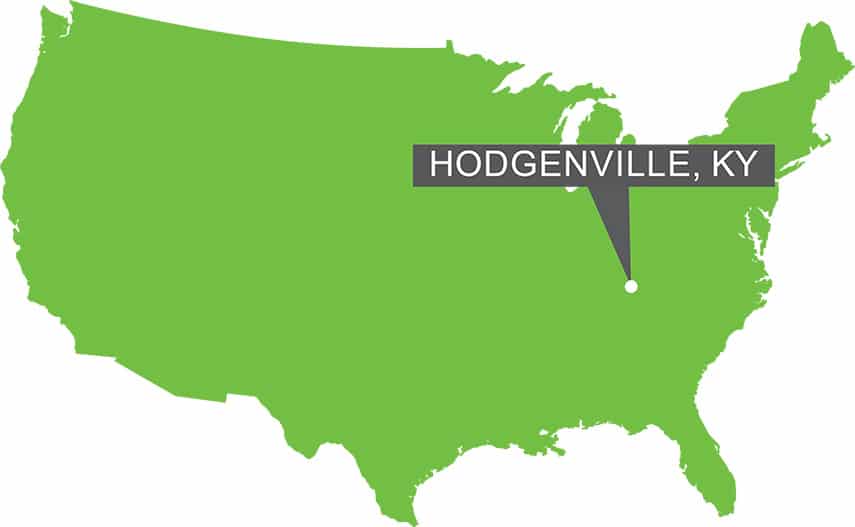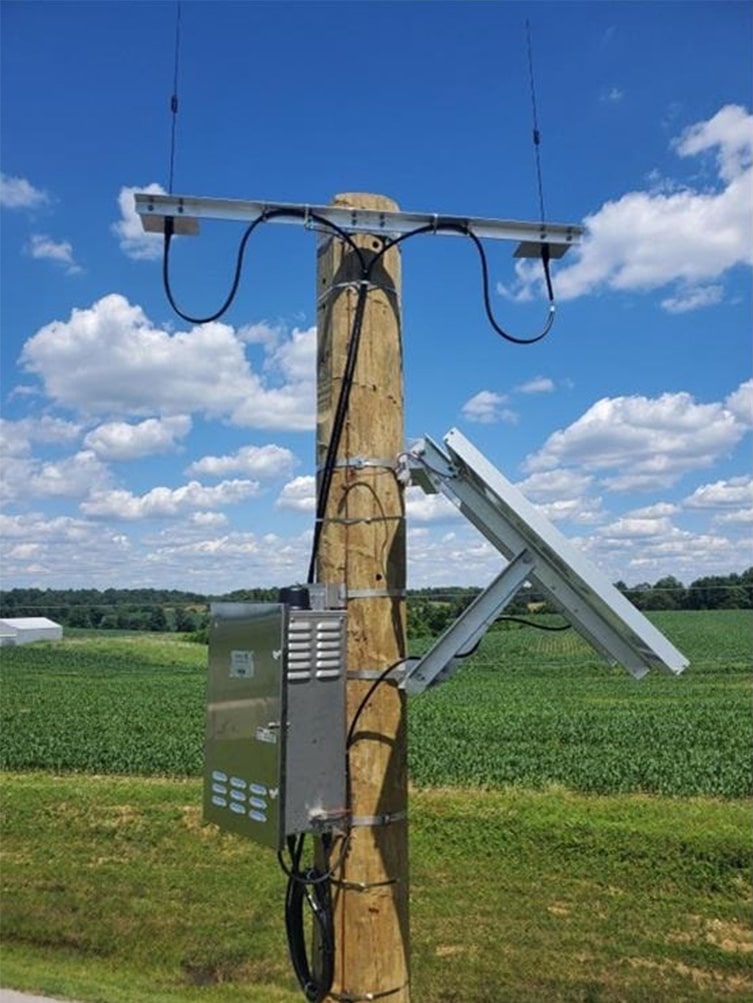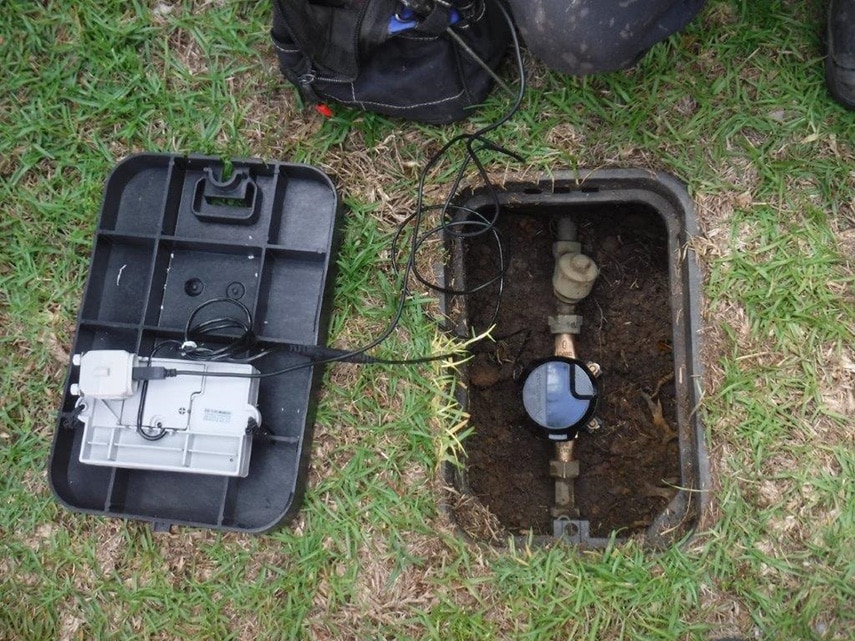Project Summary
Customer
City of Hodgenville, KY

Type of Project
AMI Installation and Ongoing Management Program
Results
- Saving of 160 hours per month in meter reading time
- Accurate and timely billing
- Ability to detect unusually high water consumption cost
When the City of Hodgenville, KY turned to USG Water Solutions (USG) for a metering asset management program, it expected a new Advanced Metering Infrastructure system that would save time and money, improve billing, and increase operational efficiency. Through USG’s Metering Asset Management Program (AMPTM), it got all that and more. It never expected that the system would also help save a life.
Founded in 1818, the City of Hodgenville, KY—today home to 4,100 residents—is known as the birthplace of President Abraham Lincoln. Its water system consists of a surface water treatment plant, wastewater treatment plant, four steel elevated storage tanks, and approximately 1,850 water meters. The system provides water to the city and LaRue County, serving about 13,500 people directly or indirectly.
While the city’s historic roots go back more than 200 years, its water distribution system now employs the latest Advanced Metering Infrastructure (AMI) technologies, equipped with sophisticated hardware and software, thanks to the vision of its Mayor, Jim Phelps and collaboration with USG.
“Not so long ago, our metering system was a mix of drive-by reading meters as well as meters that required time-consuming, labor-intensive manual reads. We were going to have to buy new software and readers, but instead, we took the opportunity to look into upgrading our metering infrastructure into an integrated, modern system,” Phelps recalls.
Implementing a smart metering system requires significant technology and software expertise plus funding to cover up-front installation costs of the AMI infrastructure that often makes it difficult for smaller utilities to afford. USG offers a unique Metering Asset Management Program that solves those issues.
USG AMI solution is a turn-key program, which includes the installation of the AMI network, software, and smart meters, and the integration with the utility’s existing systems for billing and data collection. USG can provide funding solutions to spread the up-front installation costs of the AMI over several years if necessary.
Once the installation is complete, the focus of the program becomes on-going monitoring, support, and maintenance over the life of the system. This includes field replacing of equipment (e.g., meters, transmitters, and collectors) as needed, managing software upgrades, backhaul communications, and the daily notification of events. The on-going support of the system is provided for a predictable annual cost.
“
Automated daily reads let us identify increased usage, possibly due to undiscovered leaks, and quickly notify customers so they can fix them and avoid unexpectedly high-water bills.
— Jim Phelps, Mayor of Hodgenville

According to Mayor Phelps, the city is already realizing numerous benefits from the program including:
- Cost and time savings by eliminating manual or drive-by meter reading.
“It used to take a week for 3-4 people to do meter reads. With AMI, we’ve been able to save about 160 hours per month to take care of other things,” said Phelps. - Faster, more accurate billing and improved customer service.
“Automated daily reads let us identify increased usage, possibly due to undiscovered leaks, and quickly notify customers so they can fix them and avoid unexpectedly high-water bills,” he added..
The potential to help lower non-revenue water losses.
“There’s a lot of older lines in town that have major leaks or line breaks. Now, instead of the water running for a month, we know it almost immediately,” Phelps commented.
But sometimes the greatest benefit is one that is least expected. The city’s water clerk looks almost every day for anyone who is showing excessive usage so they can be alerted in 24 to 48 hours.
One day, she called the maintenance supervisor and said, “There’s a house that’s running 200 gallons an hour. Please go and check on it.” When it appeared that no one was home, the police were called. They discovered an elderly lady inside who had turned the sink faucet on, walked off, and left it running.
“It turned out that her husband went to the garage, where he passed away. He had locked her in the house from the outside. She’d already been there for a couple of days, but no one had a clue. Had we not spotted the excessive water use, she probably would have died. And so, our AMI system became a lifesaver, not just an advanced operational tool,” Phelps said.

“
The city’s water clerk noticed that a house occupied by an elderly lady was running 200 gallons of water an hour. The police were called when no one responded. She’d already been there for a couple of days, locked in after her husband had passed. Had we not spotted the excessive water use, she probably would have died. Our AMI system thus became a lifesaver, not just an advanced operational tool.
— Jim Phelps, Mayor of Hodgenville
